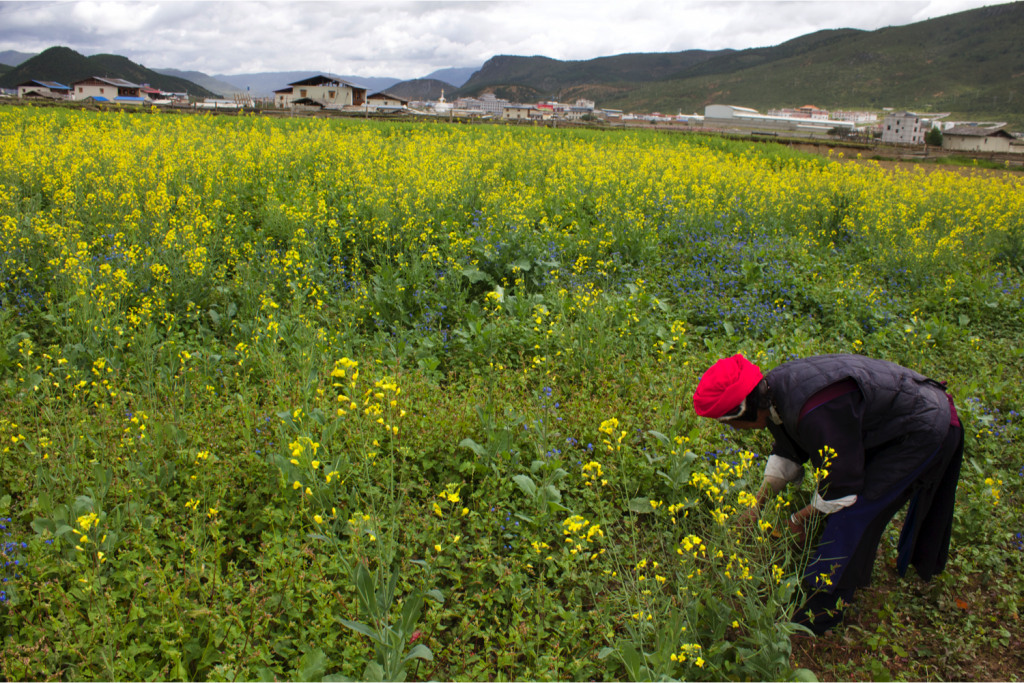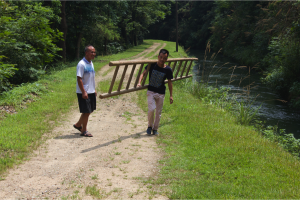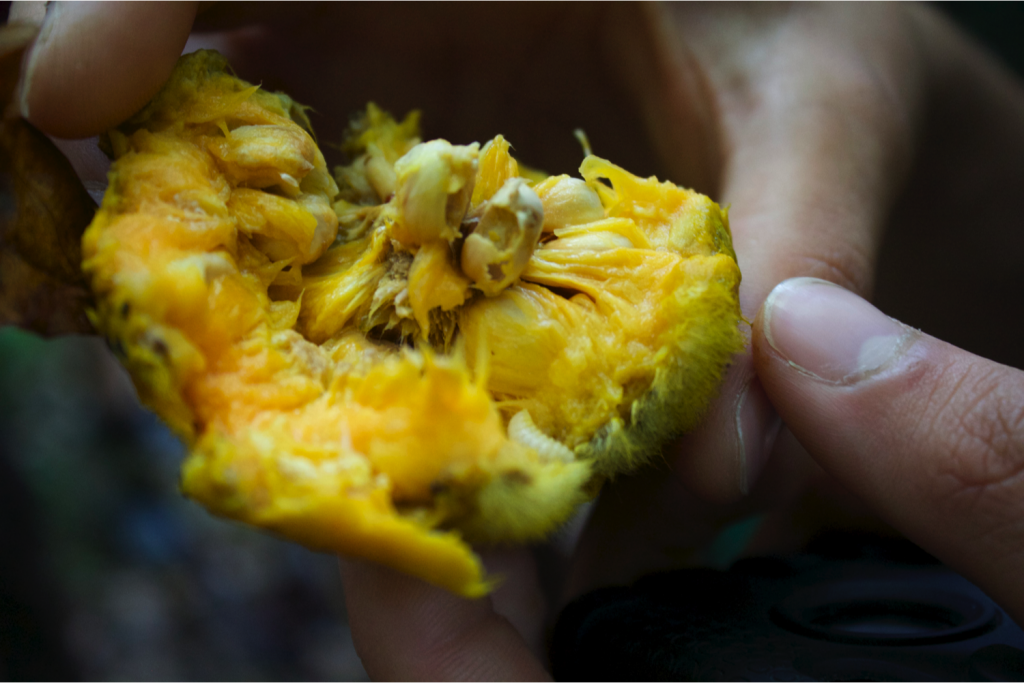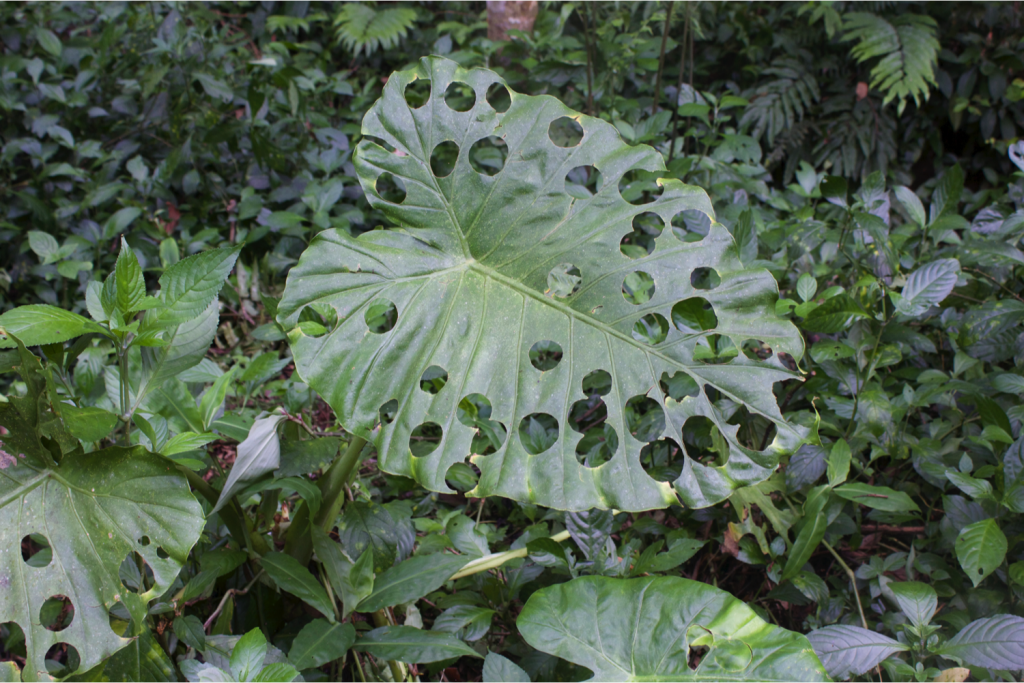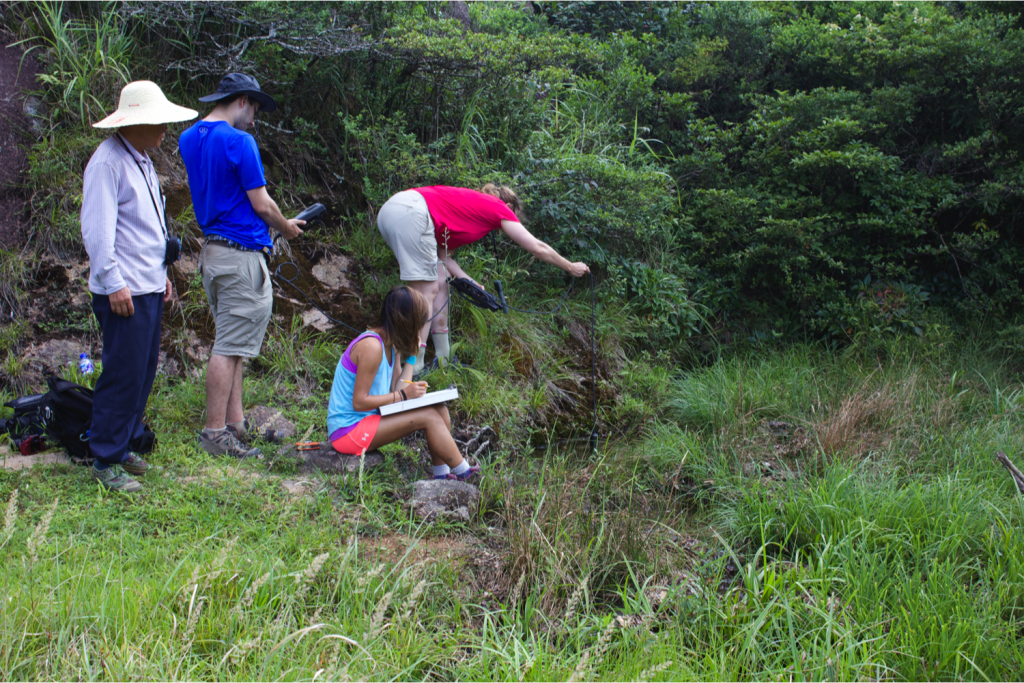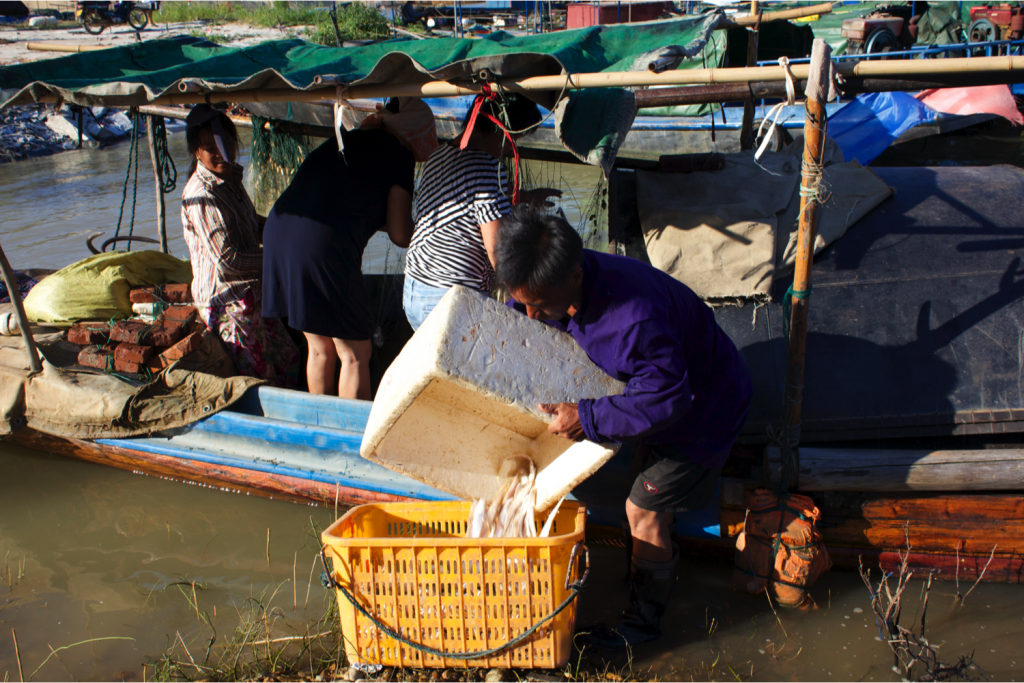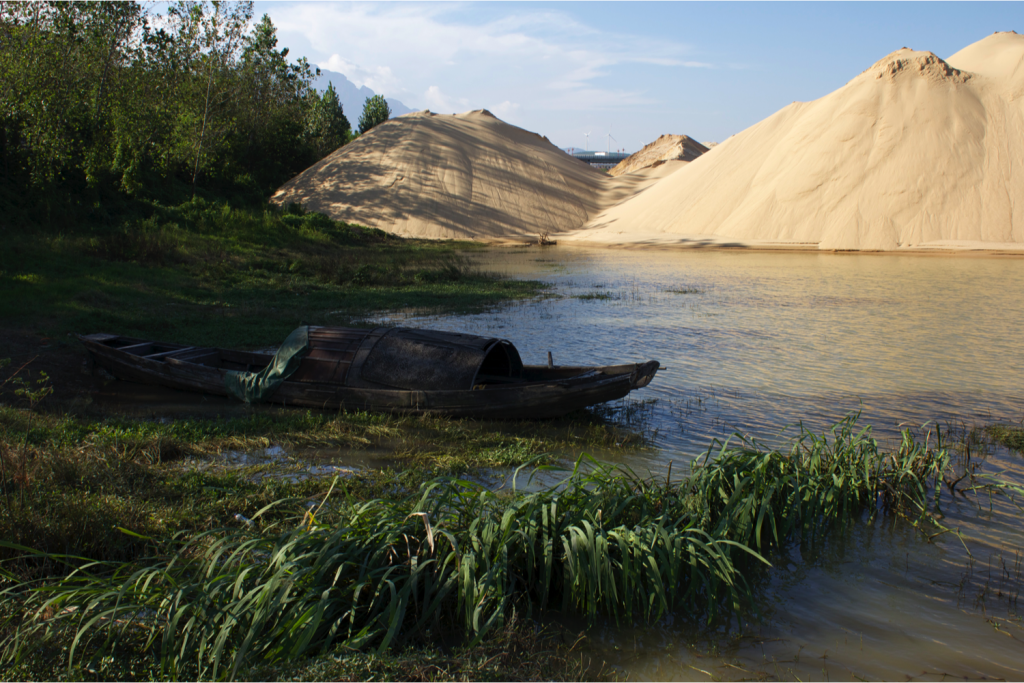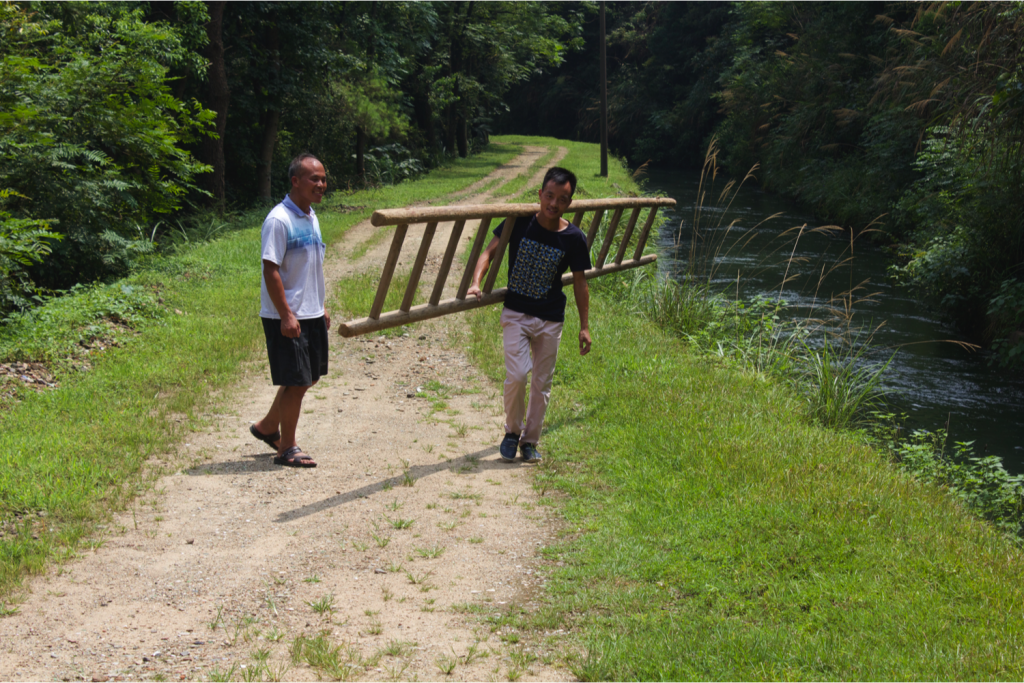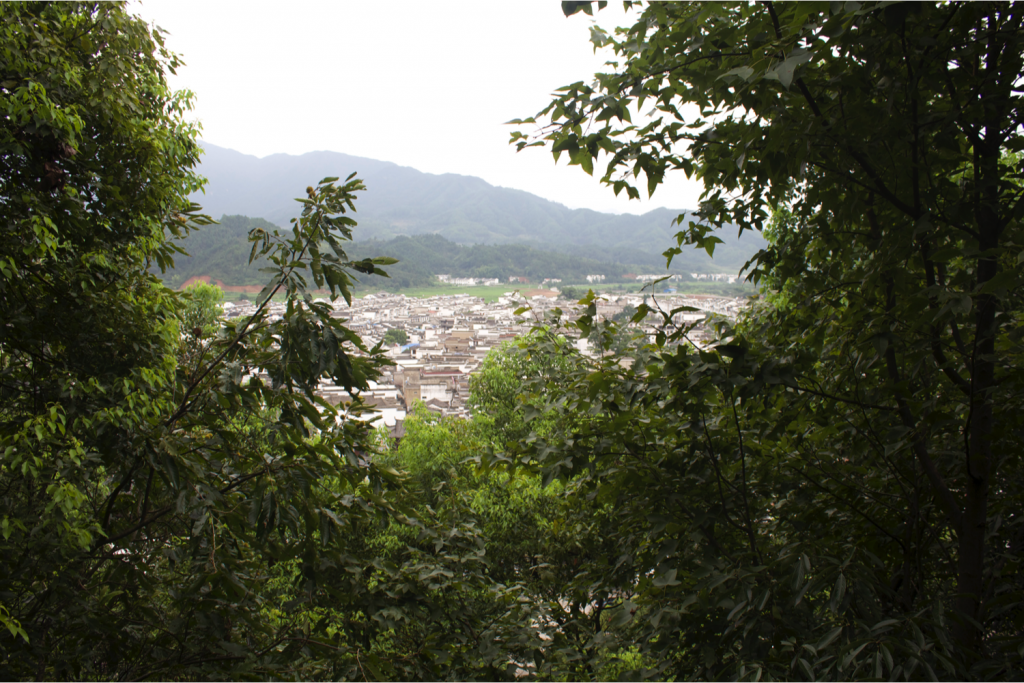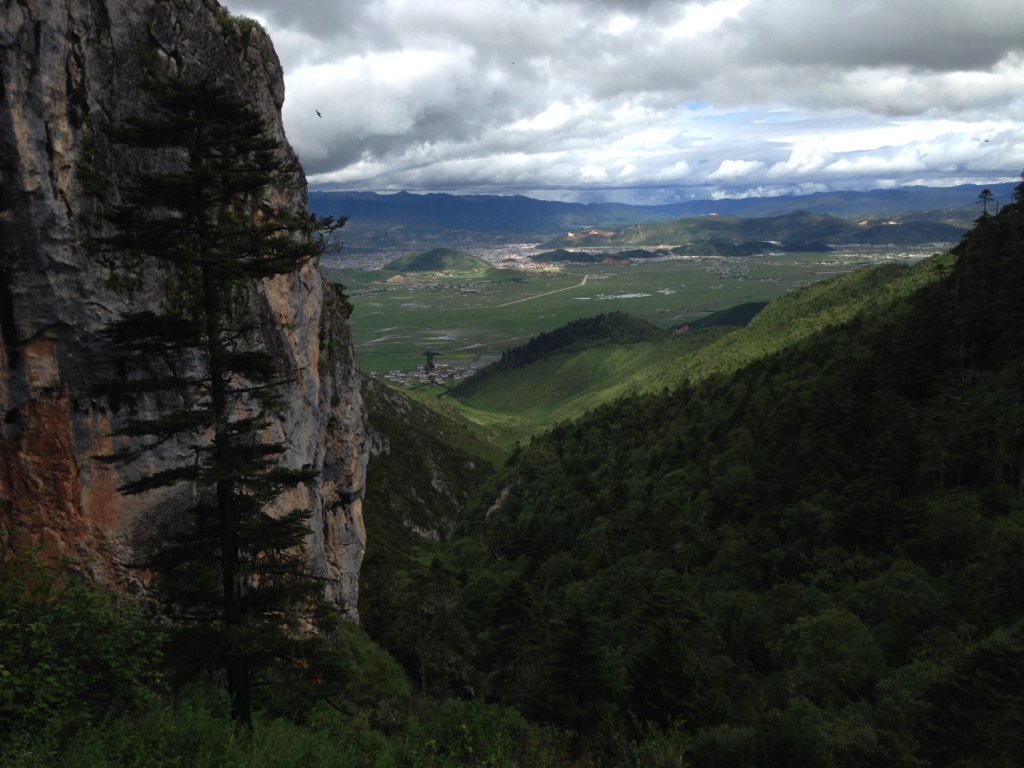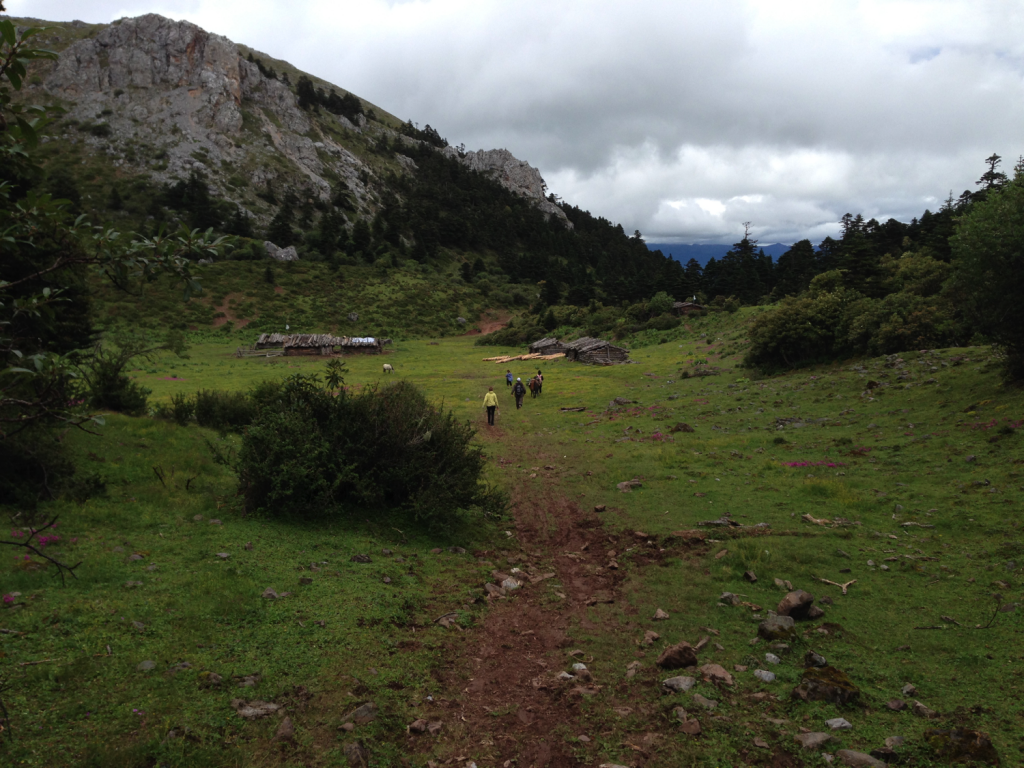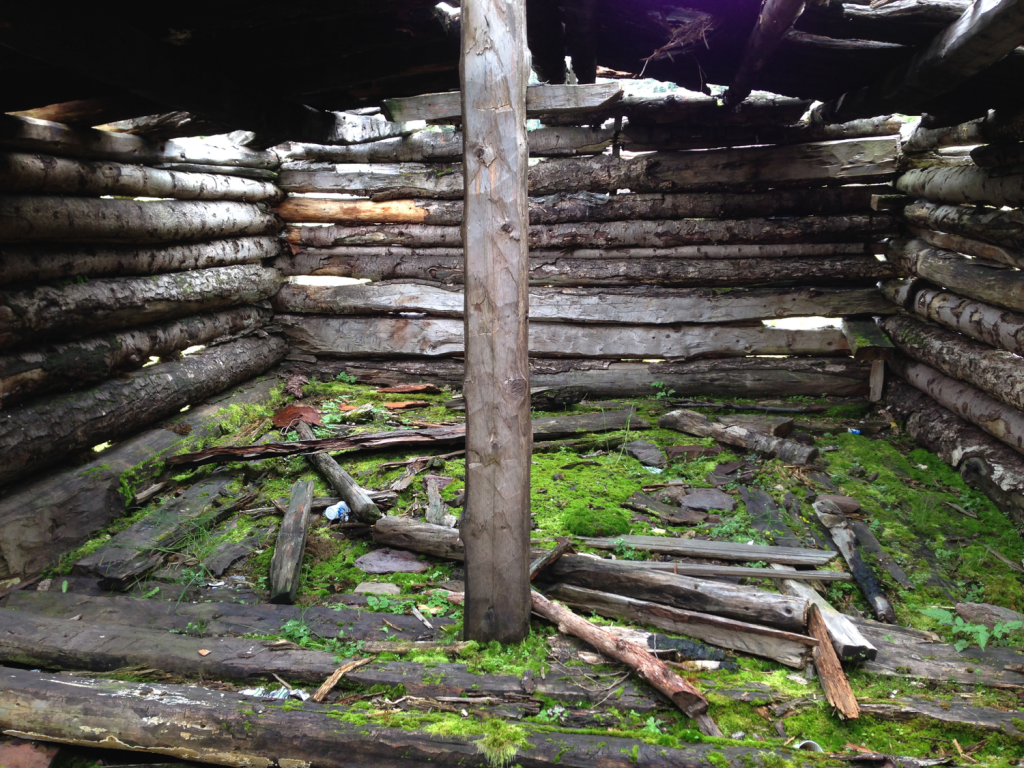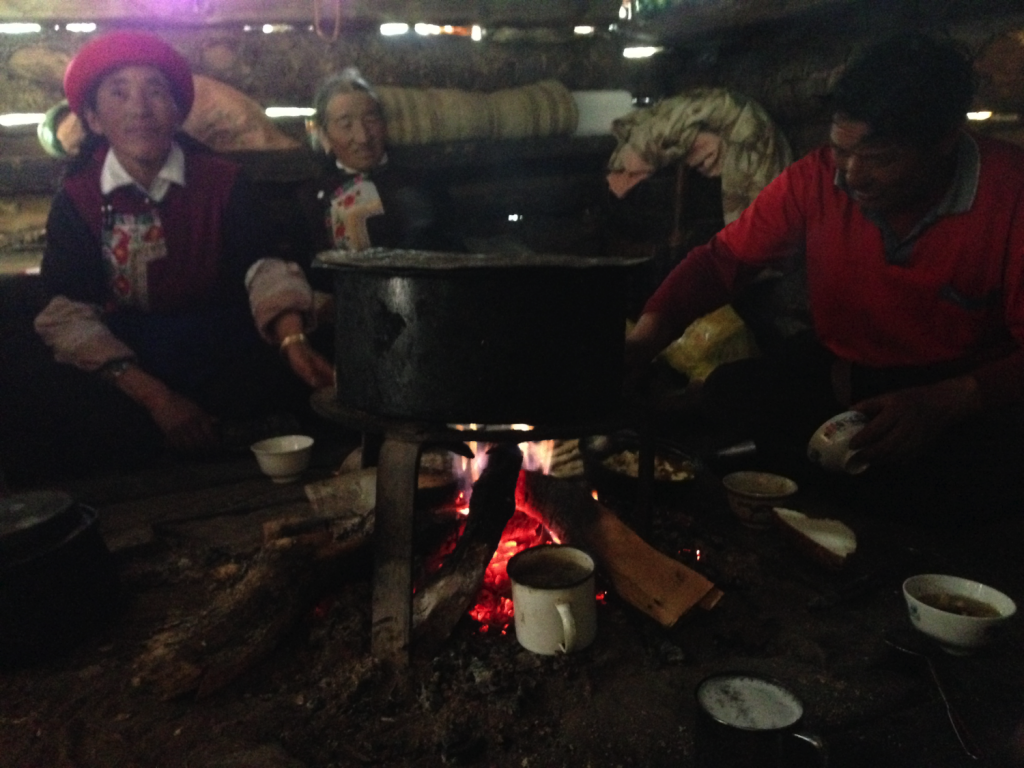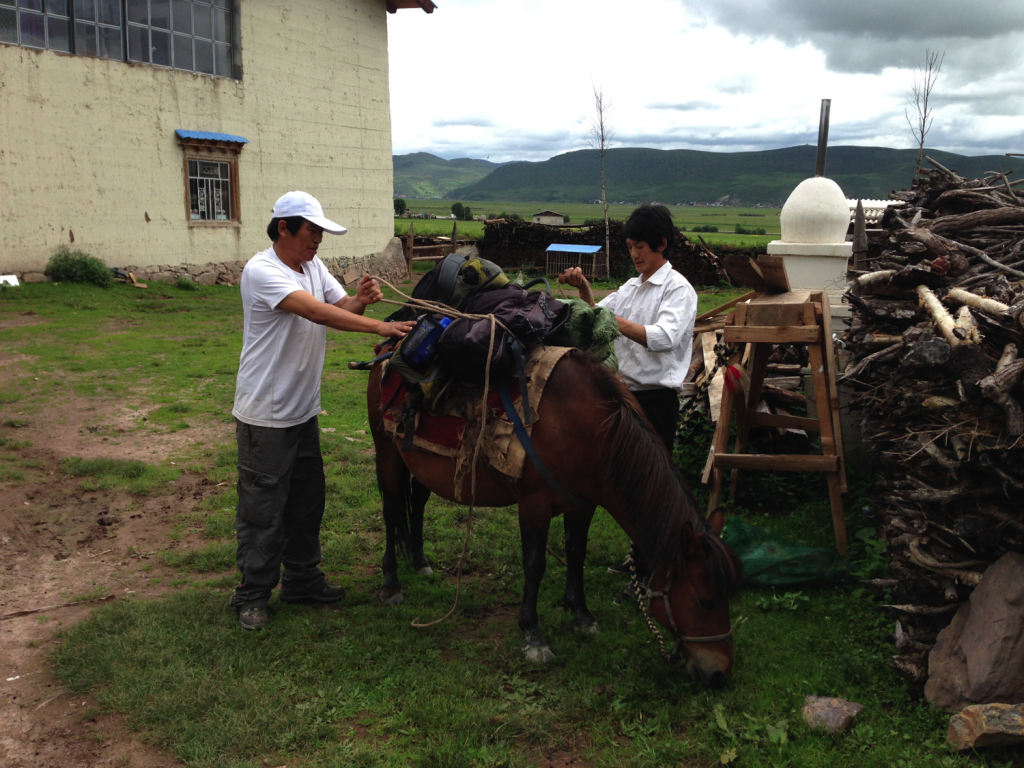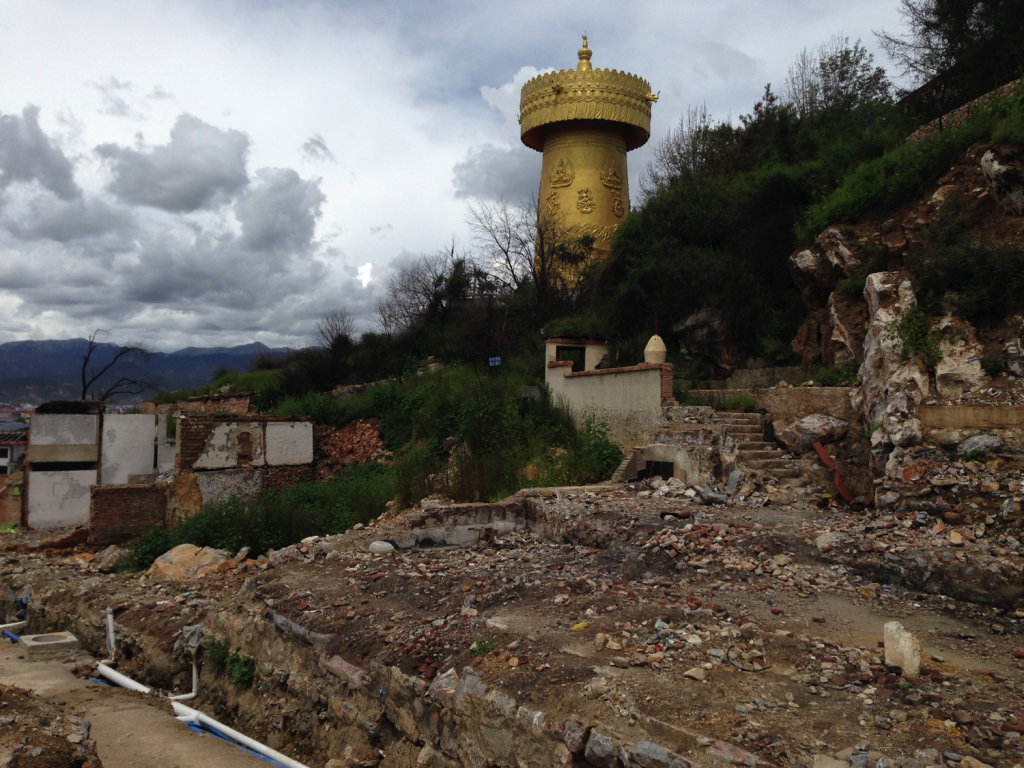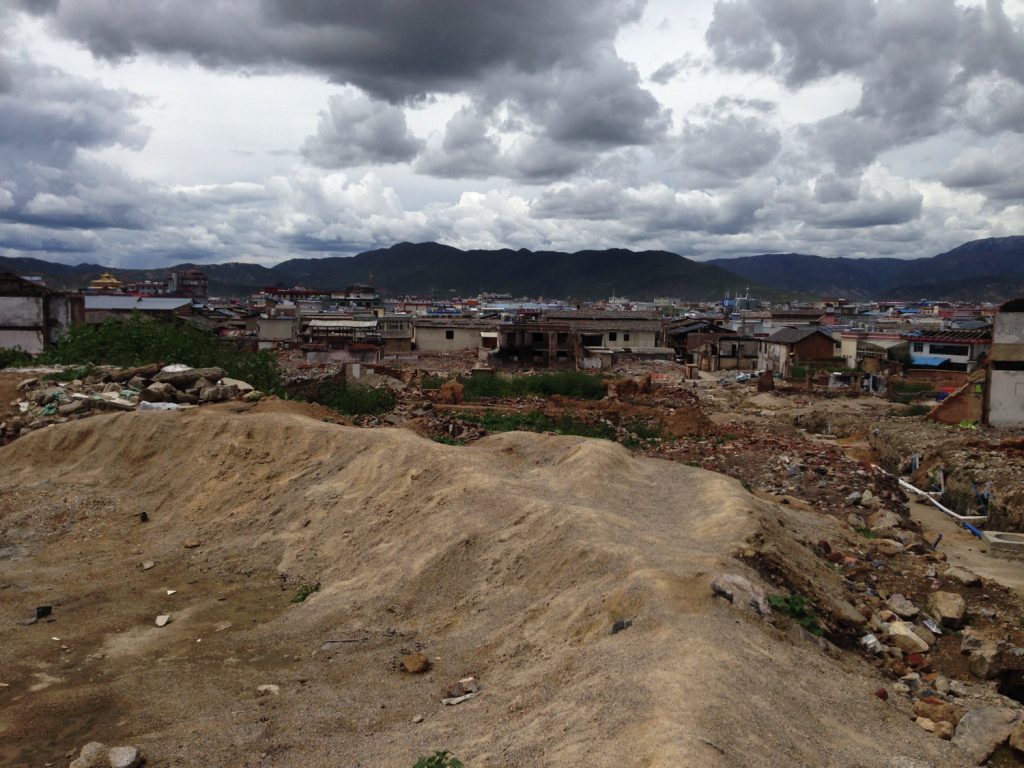In the Summer of 2014, Bard College, Bard College at Simon’s Rock, and Bard CEP professors and students went to china to conduct scientific research on forest managment and water resources.
The China team has a central goal of establishing a multi-year post Qingdao field research experience for faculty and students, with a focus on Cultural Geography and History; Forest Landscapes and Aquatic Ecology; and Contemporary Policy and Local Perceptions. The first of our three Luce LIASE-funded field projects was held in the summer of 2014, and was a great success, yielding critical data on the fengshuilin (village fengshui forests, from this point on signified by FSL), hydrology, and aquatic ecology in Jiangxi Province’s Poyang Lake basin as well as adjacent areas in Fujian Province. The students and faculty also gained a deeper understanding of the political ecology of the upper Yangzi (Changjiang) Basin, especially in regard to how central and local state watershed management, including forestry policies, have affected the local landscapes and livelihoods among Tibetan communities in Northwest Yunnan. The specific projects and outcomes associated with each section of the trip are described below.
The faculty participants in this trip were Chris Coggins (Geography and Asian Studies, Bard College at Simons Rock); Li-hua Ying (Chinese and Asian Studies, Bard College); Aris Efting (Biology and Aquatic Ecology, Bard High School Early College, Queens); and Robyn Smyth (Limnology and Oceanography, Bard Center for Environmental Policy). Jesse Minor (ABD Geography and Dendrochronology, University of Arizona) also contributed to our research program, but his trip was funded by grants and donations other than Luce LIASE. 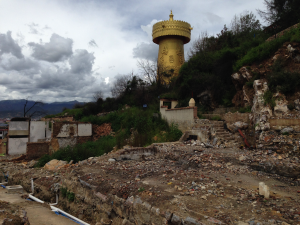 The student participants were: Alex Danza, Jade Mermini, and Patricia Sendao (Bard College at Simon’s Rock), and Lisa Burke, Nora Cooper, Destiny Riviello, Obadiah Wright, and Sam Zeitlin (Bard College).
The student participants were: Alex Danza, Jade Mermini, and Patricia Sendao (Bard College at Simon’s Rock), and Lisa Burke, Nora Cooper, Destiny Riviello, Obadiah Wright, and Sam Zeitlin (Bard College).
Hong Kong (July 24-25) In Hong Kong the state has played a leading role in the protection of present and former FSL because these groves are the only old growth or advanced successional forests in the Hong Kong SAR. Having undertaken research there in 2004 and 2011, and since the cheapest round-trip airfares to China are via Hong Kong, the Simon’s Rock group (including Aris Efting, Sam Zeitlin, and Jesse Minor) decided to spend a day learning about FSL that had not yet been part of the survey in previous years. Having arrived at night on the 24th, we explored a FSL on Lantau Island on the 25th. We learned that the Tong Fuk village FSL encompasses several very large trees and has an area of over 5 hectares. It is a classic “houlongshan” (“back dragon mountain”) type FSL, positioned up slope from a dense cluster village that faces the sea. There are earthgod shrines and an ancestral shrine adjacent to the forest. Visiting the forest gave students and faculty a deeper understanding of the local configuration of the FSL relative to the geomorphology and built environment in a Hakka village. It also gave them a sense of the kind of terrain that we would be working in and an idea of the methodology (though we did not conduct a full survey, see below).
Fujian (July 26-31) From Hong Kong we traveled by high-speed train to Xiamen, Fujian, where the Simon’s Rock contingent met the Bard group. From Xiamen we traveled by bus to the interior mountains, spending July 27-28 engaged in field research in Hakka communities in Nanjing County. This was a very productive beginning for the formal research because we designed a fieldwork protocol involving four teams engaged in well-defined projects that ran simultaneously in each village where we worked. This enabled us to collect large amounts of data quickly and it gave students and faculty the opportunity to try 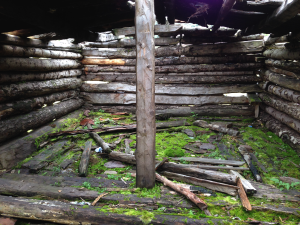 their hands at different tasks while learning more about where they felt they could contribute most productively to the project as a whole. Our groups consisted of 1) a sociocultural survey team that focused on the history of land use and specific cultural features related to lineage and fengshui landscapes (this team actually split into two parts, one that administered a formal structured survey with village chiefs or elders – led by Chris Coggins, and one that explored the village to collect stories and specific data on whatever relevant subjects and materials might become available – led by Li-hua Ying and a local person); 2) a forest research team that focused on forest and tree measurements and dendrochronology (tree ring sampling and analysis), led by Jesse Minor; 3) an aquatic ecology team that focused on stream water quality and indicators of agricultural and industrial pollution above, within, and below FSL, led by Aris Efting; and 4) a documentary film and photography team that moved between the other three groups to collect footage for the documentary film that we are producing during the coming 2-3 years. This group was instructed by Chris Coggins, but was allowed to work more or less independently. All of the students have also contributed photos and other materials that they collected independently, and this documentary data has been compiled in Google Drive.
their hands at different tasks while learning more about where they felt they could contribute most productively to the project as a whole. Our groups consisted of 1) a sociocultural survey team that focused on the history of land use and specific cultural features related to lineage and fengshui landscapes (this team actually split into two parts, one that administered a formal structured survey with village chiefs or elders – led by Chris Coggins, and one that explored the village to collect stories and specific data on whatever relevant subjects and materials might become available – led by Li-hua Ying and a local person); 2) a forest research team that focused on forest and tree measurements and dendrochronology (tree ring sampling and analysis), led by Jesse Minor; 3) an aquatic ecology team that focused on stream water quality and indicators of agricultural and industrial pollution above, within, and below FSL, led by Aris Efting; and 4) a documentary film and photography team that moved between the other three groups to collect footage for the documentary film that we are producing during the coming 2-3 years. This group was instructed by Chris Coggins, but was allowed to work more or less independently. All of the students have also contributed photos and other materials that they collected independently, and this documentary data has been compiled in Google Drive.
Having collected a wide range of important data in several villages in Nanjing County, we traveled to nearby Shanghang County, where we worked in and around the Meihuashan Nature Reserve. The same methods were used and with great success. We collaborated with dendrochronologists from Fujian Normal University, Zheng Huaizhou and Fang Keyan (Zheng entered the field with us but Fang could not join us this year) to collect tree core samples. The Fujian Forestry Bureau and the Meihuashan Reserve administration gave us permission to collect the samples, and they were taken to the tree ring analysis lab at Fujian Normal for processing. We hope to have preliminary results soon. The stream water research involved in situ analysis and the collection of water samples for analysis in the US. We have preliminary data from the in situ analysis and we hope to have additional data from both sample types before 2015.
Jiangxi (August 1-8) The majority of our field research took place in the Poyang Lake Basin of Jiangxi Province. First, we worked with Chen Yuwei, of NIGLAS (the Nanjing Institute of Geography and Limnology). Robyn Smyth joined us for this part of the trip and she was responsible for establishing our relationship with NIGLAS. This was especially important after our former relations with Nanchang University’s Poyang Lake Research Institute were rendered useless by severe political turmoil involving university leaders and researchers. Professor Chen gave us an extremely interesting and informative tour of Lake Poyang, during which we saw some two dozen finless porpoises (Neophocaena phocaenoides, Chinese jiangtun, 江豚), and learned how sand dredging and dam building (including the construction of the Three-Gorges Dam) are affecting the hydrology and ecology of Lake Poyang. Dr. Chen also showed us how to collect and analyze water samples, and introduced us to a fishing family who helped us understand some of the relationships between lake management, environmental change, and local household economies.
Before traveling to northeast Jiangxi’s Wuyuan County to continue the FSL research, Chris Coggins and Li-hua Ying traveled to Nanchang, the capital of Jiangxi, where Coggins was invited by the head of the Jiangxi Forestry Bureau to deliver a two-hour lecture (with discussion) in Mandarin to about 180 members of the Bureau. The talk focused on his FSL research and how it relates to forest and watershed conservation. Coggins first discussed this topic with the head of the Forestry Bureau, Yan Gangjun, during a car ride from Nanchang to Wuyuan in 2012. Director Yan is now implementing a FSL conservation and restoration initiative throughout the province. Li-hua Ying’s extensive relations with members of the Jiangxi provincial government made this part of the trip possible.
In Wuyuan, we continued the research protocol developed in Fujian. The Fujian work was ideal testing ground for work in less-known parts of NE Jiangxi. Our project is always challenged by lack of knowledge regarding the number and quality of FSL in any given area with which we are not yet familiar. Although Coggins conducted reconnaissance work in Wuyuan in 2012, he was not sure about conditions in villages in areas he had not seen, and it was not clear whether the aquatic ecology research would work effectively because the relationship between stream patterns and village FSL was not clear. We were relieved and highly inspired to discover that the rural landscapes of NE Jiangxi make ideal testing grounds for research on the relationship between FSL and stream water quality. In fact, the in situ water quality results indicate much better stream conditions than we expected, and this may have to do not only with patterns of forest coverage, but also with the effects of agricultural terracing on hydrology and ecology. This is a subject that may not be in the literature, but we hope to ascertain this as soon as possible.
Yunnan (August 9-11) From Jiangxi we traveled to Shangrila County in the Diqing Tibetan Automous Prefecture of NW Yunnan Province. This is an area that has been profoundly affected by national efforts to control flooding and discharge rates along the Yangzi (Changjiang River). In 1999, after several seasons (and a long history) of severe flooding in the central and lower reaches of the river (in no small part the result of infilling of the major lake and wetland basins of Poyang and Dongting Lakes), the Central Government declared a logging ban in the entire upper Yangzi Basin, an enormous region encompassing much of the Tibet Autonomous Region and adjacent parts of Yunnan and Sichuan. The livelihoods of people in Tibetan and other ethnic minority communities were deeply affected. Cognizant of the potential exacerbation of an already significant crisis of state legitimation among non-Han peoples of western China, the government implemented the Great Western Development Program (Xibu Da Kaifa, 西部大开发) in 2000. The focus of this development program is sustainable development, including ecotourism, nature conservation, and other “environmentally friendly” economic projects. Students were assigned readings from Mapping Shangrila: Contested Landscapes of the Sino-Tibetan Borderlands (University of Washington Press, 2014), edited by Emily Yeh and Chris Coggins, and including chapters by Li-hua Ying and Chris Coggins, in order to gain a deeper understanding of the political ecology of water management in China’s largest drainage basin. Students and faculty participated in a workshop on Diqing Tibetan agriculture and pastoralism, held in Trinyi Village, they learned about similarities and differences between FSL and Tibetan village sacred forests (both have important hydrological functions, preventing erosion and maintaining water quality and quantity), and they visited the regions largest and oldest major Tibetan monastery – Songzanlin – with a tour by one of Coggins research collaborators, a local Tibetan who is a former lama named Lazong Ruiba.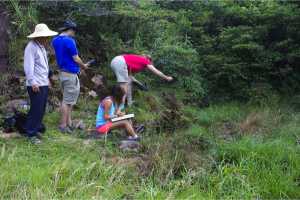
Summary This trip was extremely successful, allowing us the opportunity to develop a remarkable degree of multi-disciplinary and interdisciplinary cooperation. As noted below, students and affiliated faculty have begun to share our findings via the documentary and in public presentations. We have also learned how to plan for field research in 2015 and 2016, and these trips can be less expensive and more closely focused on field sites in the Poyang basin and adjacent regions. Plans are currently underway for the second field experience scheduled for July 2015.
Photos from the Fengshui Forest Research in Fujian and Jiangxi 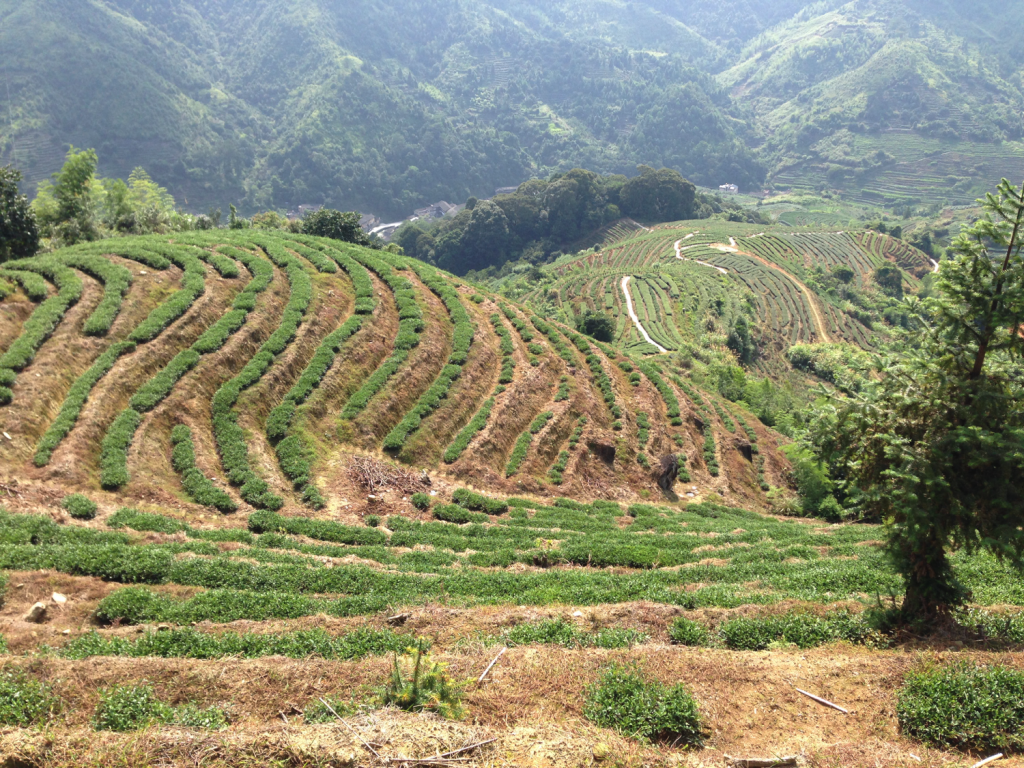
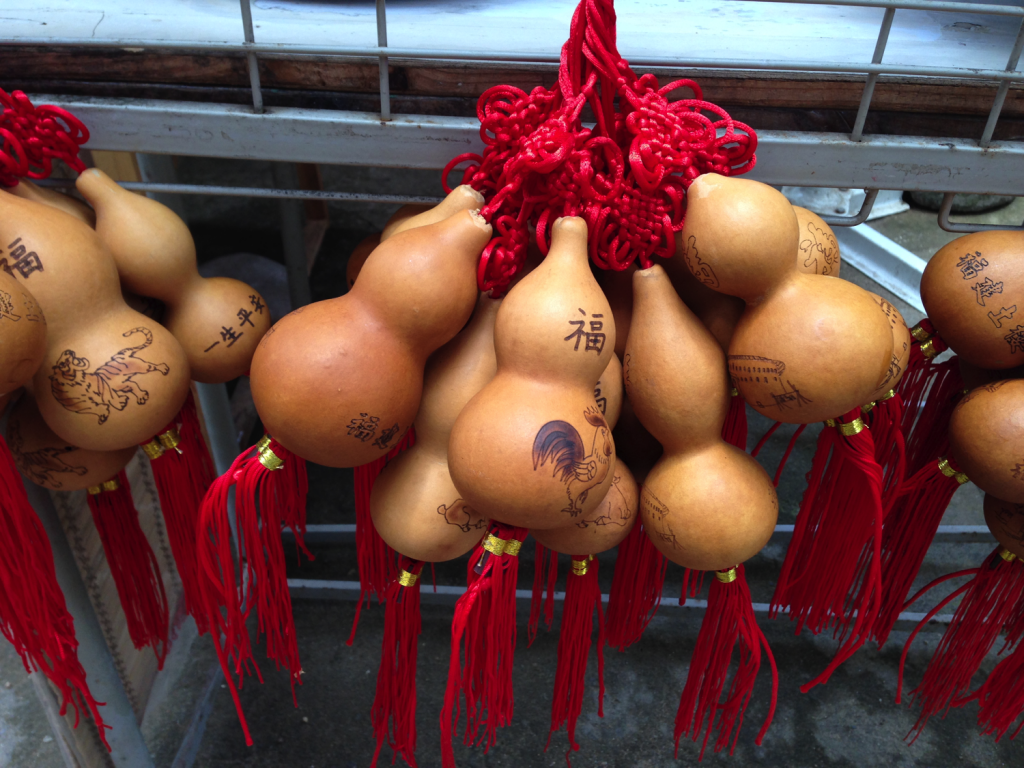
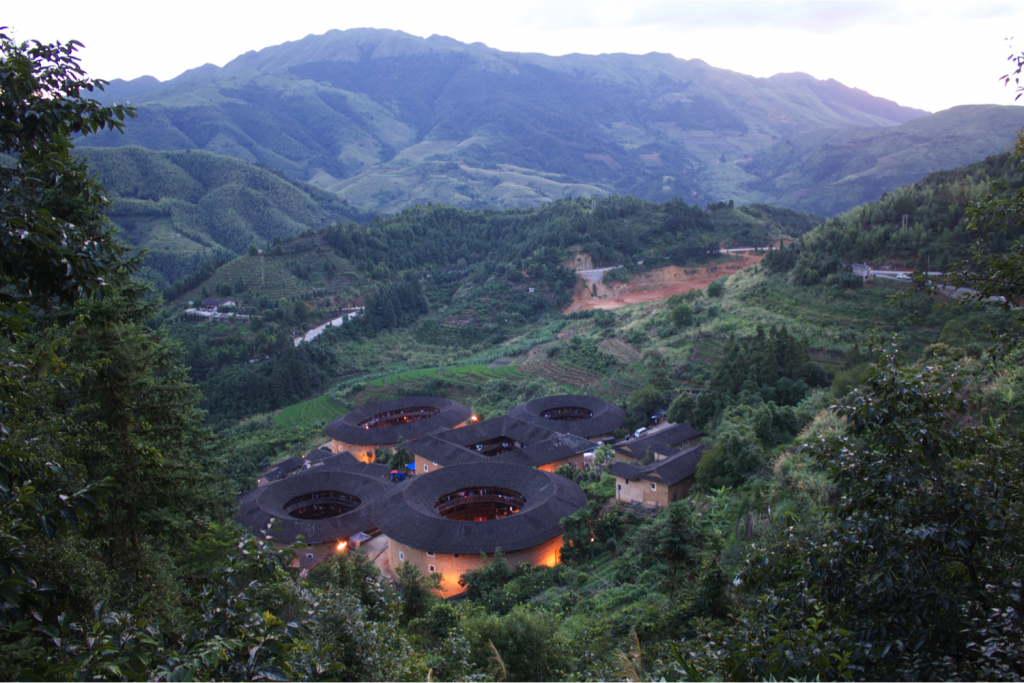
Fujian Province – Nanjing County in the Letu Subtropical Rainforest Nature Reserve
In Fujian – Meihuashan, we worked on Dendrochronology and Aquatic Ecology:
Jiangxi Province, Wuyuan County, we worked on the Village Fengshui Forest Survey and Aquatic Ecology:
In Jiangxi Province, Wuyuan County we worked on the Village Fengshui Forest Survey and also on Aquatic Ecology:
Lastly, we were in the beautiful Northwest Yunnan Province:

